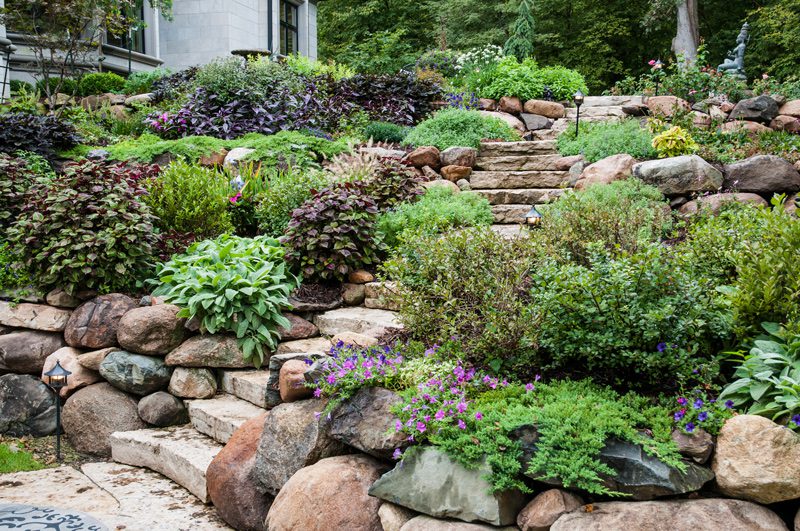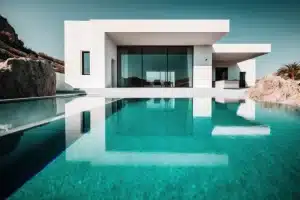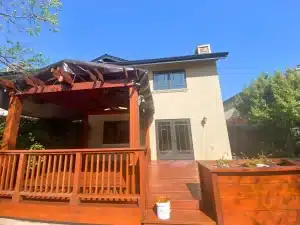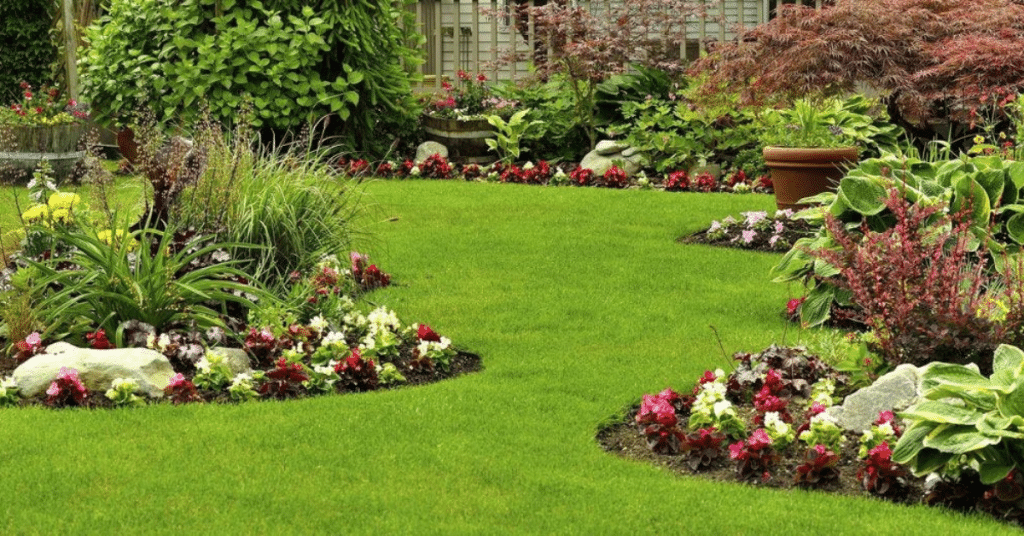Hey there! If you’ve been dreaming about upgrading your outdoor space, you’ve probably come across the terms softscaping and hardscaping. These two elements form the backbone of any beautiful yard. Think of hardscaping as the “bones” and softscaping features as the “flesh” that brings everything to life. When combined thoughtfully, they create outdoor spaces that are both functional and stunning. Proper softscaping can transform even the most basic yard into a lush paradise. Let’s dig into what makes each special!
Understanding the Difference Between Hardscaping and Softscaping
Simply put, much hardscaping includes all the non-living elements in your yard – things like patios, walkways, retaining walls, and fire pits. These permanent structures provide the framework for your outdoor space. They’re the parts that stay constant throughout the seasons and require minimal maintenance once installed.
On the flip side, softscaping refers to all the living elements that grow and change. This includes your trees, shrubs, flowers, grass, and other plants. These natural components add color, texture, and life to your yard. Quality softscaping creates dynamic spaces that evolve through seasons. Unlike natural stone hardscape features, your softscape elements evolve over time, changing with the seasons and growing larger as years pass.
The magic happens when these two aspects work together! A yard with only concrete and stone feels cold and uninviting, while one with only plants might look wild and unstructured. The perfect outdoor space needs both.
Key Elements of Hardscape and Softscape Design
When planning your outdoor area, understanding key design elements helps create harmony. For hardscaping, consider:
- Bathroom walls and floors near showers and tubs
- Window frames and sills, especially on weather-facing sides
- Roof valleys and chimney flashings
- Deck-to-house connections
- Crawl spaces under the main floor
For softscaping, think about layering plants of different heights, textures, and blooming seasons. Effective softscaping requires knowing which plants thrive in your specific climate. This creates visual interest throughout the year and supports local wildlife too!
Popular Hardscape Features for Outdoor Spaces
Stone patios remain one of the most requested hardscape features, offering durability and timeless appeal. Fire pits and outdoor kitchens have gained popularity as families spend more time enjoying their backyards. Strategically placed lighting transforms your space after dark, highlighting architectural features and ensuring safety along pathways.
Custom pergolas provide partial shade while framing outdoor living areas beautifully. Even simple elements like decorative boulders can serve as natural focal points that require zero maintenance.
Softscape Elements That Enhance Natural Beauty
Trees form the backbone of your softscape design, providing shade, privacy, and habitat for birds. Flowering perennials add bursts of color that return year after year with minimal effort. Ornamental grasses bring movement and texture, especially when they catch the breeze.
Ground covers reduce maintenance while adding interesting textures at the lowest level. Don’t forget seasonal bulbs that surprise you with color when you need it most! Native plants typically require less water and care while supporting local ecosystems.

Choosing The Right Landscape Design Elements To Blend Everything Together
Finding the perfect balance starts with considering how you’ll use the space. Do you need play areas for kids? A quiet reading nook? Space for entertaining? Let these needs guide your choices.
Think about traffic flow throughout your yard. Hardscape elements should direct movement naturally while softscape components soften edges and transitions. Professional softscaping services can help you select the right plants for each area of your yard. Consider scale too – a tiny patio surrounded by massive trees feels uncomfortable, while a large deck needs substantial plantings to feel grounded.
Colors matter! Choose hardscape materials that complement your home’s exterior and select plants with color schemes that make you happy.
Learning To Balance Between Hardscaping And Softscaping
Most landscape designers recommend starting with hardscape elements since they’re harder to change later. Once your patios, walls, and structures are in place, you can add plants around them. This approach prevents damage to beloved plants during construction.
Budget often determines this balance too. Hardscaping typically costs more upfront but requires less maintenance. Softscaping costs less initially but needs ongoing care. Seasonal softscaping updates can keep your yard looking fresh year-round. Finding your personal sweet spot depends on your lifestyle and maintenance preferences.
Remember that your landscape evolves over time. Plants grow, materials weather, and your needs change. The best designs allow for this evolution while maintaining their core structure. With thoughtful planning, your outdoor space will be a source of joy for years to come!
Trustindex verifies that the original source of the review is Google. We’re so happy with the work Hila and her team did on our home addition. The new space flows beautifully with the existing structure, and the quality is clear in every finish. Finished on schedule and stress-free.Posted onTrustindex verifies that the original source of the review is Google. Working with Ohad on our full home remodel was an incredible experience. He helped us through every decision and made sure everything turned out exactly how we envisioned. The team was easy to communicate with and super detail-focused. We still can’t believe how beautiful our home looks!Posted onTrustindex verifies that the original source of the review is Google. We recently worked with Quartz Construction (Owner: Ohad) for a construction project to remodel our Bathroom and we couldn’t be more pleased with the results. From start to finish, their team demonstrated professionalism, and exceptional craftsmanship. They maintained clear communication throughout the project, kept us informed of progress and any potential changes, and delivered everything on time and within budget. Their quality of work is outstanding — every detail was handled with care and precision. What stood out most was their commitment to customer satisfaction. They were responsive to our questions, respectful of our space, and ensured that the final outcome matched our vision perfectly. If you're looking for a reliable, skilled, and trustworthy construction contractor, I wholeheartedly recommend Quartz Construction ( Ohad and his team) .They exceeded our expectations in every way. AjayPosted onTrustindex verifies that the original source of the review is Google. I had a fantastic experience working with Quartz Construction And Remodeling. Ohad Maloul the owner was professional communicative and a pleasure to work with from start to finish. His team repaired and painted my backyard pergola and the quality of their work was truly excellent. They were always on time, friendly and responsive to any questions I had throughout the process. I appreciated the clear communication and attention to detail. I’m excited to work with Ohad and his team on future projects and highly recommend them to anyone looking for reliable, high-quality construction or remodeling services.Posted onTrustindex verifies that the original source of the review is Google. Hila managed our balcony addition project with care and precision. The design complements our home perfectly, and the build quality is outstanding. She communicated every step and made the whole process easy. We’re thrilled with the result!Posted onTrustindex verifies that the original source of the review is Google. I had the chance to work with Ohad and his construction team on a recent home project, and I was really impressed. Ohad is professional, easy to communicate with, and genuinely cares about the quality of the work. The crew showed up on time, kept the work area clean, and finished the job on schedule. It’s hard to find contractors who are reliable and transparent these days, but Ohad delivered on everything he promised. Would definitely recommend if you’re looking for someone who takes pride in their work and keeps things straightforward.Posted onTrustindex verifies that the original source of the review is Google. We’re so happy with the work Quartz Construction did on our backyard. Ohad’s team designed and built a gorgeous deck and patio that turned the area into a dream space. The quality and detail are fantastic. Highly recommend!Posted onTrustindex verifies that the original source of the review is Google. Quartz Construction built the most beautiful pergola in our backyard, thanks to Ohad. He was easy to work with, listened to our needs, and delivered a structure that’s both stylish and durable. We now have a shaded space where we can relax and entertain guests.Posted onTrustindex verifies that the original source of the review is Google. They built a beautiful, durable pergola that fits our outdoor space perfectly. Hila paid close attention to both style and quality. We now have the perfect spot for lounging, gatherings, and enjoying every season.Posted onTrustindex verifies that the original source of the review is Google. We feel incredibly lucky to have worked with Hila. She made the ADU process simple and stress-free, handling everything with care and professionalism. The final space is perfect—efficient, elegant, and exactly what we hoped for. Big thanks to her and the whole crew!Verified by TrustindexTrustindex verified badge is the Universal Symbol of Trust. Only the greatest companies can get the verified badge who has a review score above 4.5, based on customer reviews over the past 12 months. Read more

FAQs
What is the difference between hard and soft scaping?
Hardscaping involves inanimate objects like stone, pavers, and concrete that provide structure to your yard. These elements create the foundation for outdoor living spaces. On the flip side, softscaping involves living plants, greenery, and horticultural elements that bring your landscape to life. Striking the right balance between hardscaping and softscapes creates stunning curb appeal.
Is concrete a hardscape?
Absolutely! Concrete is a classic hardscape element that serves a practical purpose in many landscapes. Like stone, pavers, and other hardscaping elements, concrete creates durable surfaces for patios, walkways, and driveways. Hardscape structures like concrete features last for decades with minimal maintenance, making them valuable additions that can boost your property value.
What are the disadvantages of hardscaping?
Too many hardscapes can create runoff and erosion problems during heavy rain. Without enough softscape features to absorb water, you might face drainage issues. Excessive hardscaping elements can also make your yard feel cold and unwelcoming. The right balance between hardscaping and living plants is crucial for both aesthetics and environmental health. Low-maintenance doesn’t mean no greenery!







